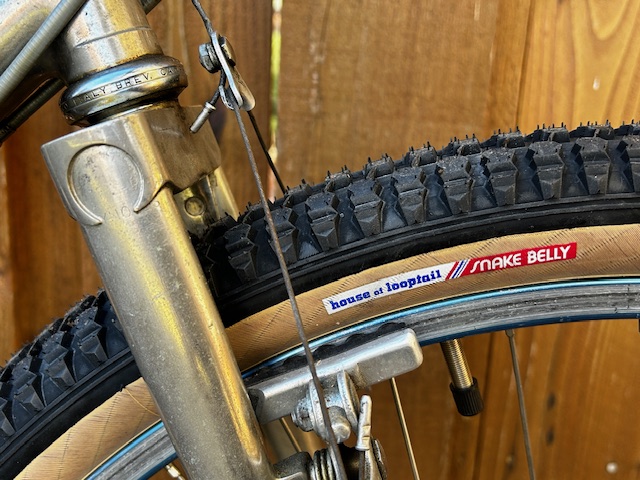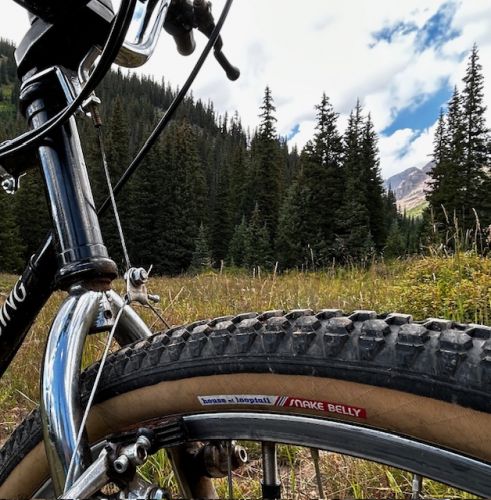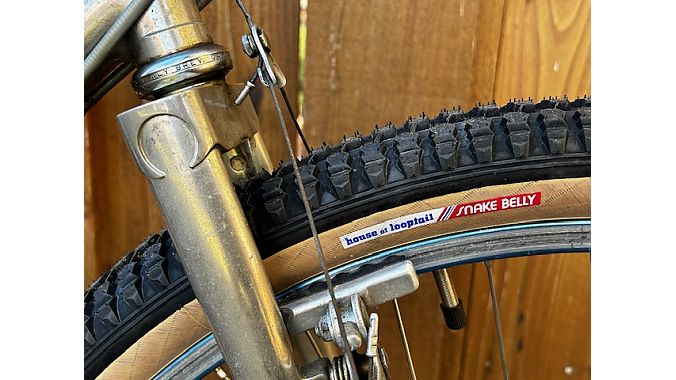Editor's note: A version of this article ran in the February issue of Bicycle Retailer & Industry News. If you don't receive our magazine (in print or digital format), please sign up for a free subscription at bicycleretailer.secure.darwin.cx/Z2COTRLB.
LAKEWOOD, Colo. (BRAIN) — Some lovers of vintage bikes work to bring them to sparkling, like-new condition.
Wakeman Massie rides the hell out of them.
Massie digs old bikes — early BMX cruisers, clunkers, late ’80s and early ’90s mountain bikes, old BMX bikes and more. But he says he’s not a collector.
“I don’t like the word, ‘collector.’ I don’t like it. It conjures up people who have wall hangers, hoarders ... I’m an appreciator. These are bikes that deserve to be ridden. I mean, if you have a Steve Potts bike from 1988, that was built to last a lifetime — why not ride it? I appreciate a hand-crafted product, a nostalgic product, but I think they are still valid and useful. I don’t keep them around if they are not rideable,” he told BRAIN recently.
Massie founded House of Looptail, which sells exact duplicates of some early 26-inch mountain bike tires that had been unavailable for years. It began selling its first tires in the fall.
House of Looptail’s first product is an exact replica of the 1970’s-era Snakebelly tire in 26-inch. The Snakebelly tread was first used on a CyclePro-branded 20-inch BMX tire and later on early mountain bikes and 26-inch wheeled BMX cruisers. Massie worked with Panaracer, which made the original tire, to source a high-quality replica. He had to design new molds and pay for them. (“A significant amount of money,” he said.) The resulting tire has small House of Looptail and Snakebelly hotpatches on the sidewalls and looks right at home on a restored bike of the appropriate vintage.
 No matter the era or style of bike they favor, restorers find out quickly that if NOS tires exist in the appropriate size and tread, they are often so old they are unrideable. And they are expensive: Vintage 26-inch mountain bike tires can sell on eBay for $200 a pair or more, and sellers are careful to say they are for display, not riding (like this recent listing for some NOS Tioga Farmer John tires).
No matter the era or style of bike they favor, restorers find out quickly that if NOS tires exist in the appropriate size and tread, they are often so old they are unrideable. And they are expensive: Vintage 26-inch mountain bike tires can sell on eBay for $200 a pair or more, and sellers are careful to say they are for display, not riding (like this recent listing for some NOS Tioga Farmer John tires).
If Massie’s philosophy of appreciation-without-preciousness sounds vaguely familiar, it might help to know that he was the first product developer for QBP’s Surly brand. He even drew Surly’s original logo and designed its first few frame models, the ultimate platforms for creative shop mechanics looking for a home for whatever treasured components they had in their parts boxes.
Massie has been in and out of the industry for decades. He worked in bike shops in Colorado and on the East Coast in the 1980s, earned an industrial design degree at Metropolitan State University of Denver (an appreciated but not precious institution), and went to work for QBP in Minneapolis in 1996 as the distributor’s first product designer and product manager.
By the time he left in 2001, Massie figures he had designed over 100 products for QBP under the brands of Surly, 1X1, Problem Solvers and Salsa, which QBP bought in 1997.
Massie later did freelance work for Jagwire, Tektro and some other Taiwanese brands, and then moved away from bikes to run a MOPAR auto restoration business in Colorado. More recently his interest returned to bicycles. In the classic start-up story, he launched a company to manufacture and sell Snakebellys because he needed them.
“It all came rushing back, I suppose,” he said. “There aren’t many tires for these bikes, and I want to keep riding them, and I don’t want to have to use some gigantic ugly black tire with a huge logo on the sidewall.
“I literally sweat the size and shape of cable ends. I’ve spent two years looking for the right grips. I don’t want to put some new Conti’ tires on there. I was finding it impossible to find high-end, rideable rubber that looked correct. So that’s what we’re doing.”
House of Looptail is selling the Snakebellys consumer-direct for $85 and wholesale through a handful of interested shops. Massie said he hopes to sell a lot of the tires consumer-direct because he needs the margin to recoup the cost of tire molds.
The next project is the Competition Deuce, a re-make of the chunky motocross-style Comp II BMX tire tread from the 1970s, in 26-inch. After that comes a replica of the Ritchey Z-Max tire in 26-inch in two widths, perfect for a late ’80’s/early ’90s Bridgestone, Salsa or Ritchey, for example. The Z-Max is licensed from Ritchey Design but will be sold exclusively by House of Looptail.
“Tom (Ritchey) was into it, and we reached an exclusive marketing licensing agreement with them. It’s the real deal, not a riff, it’s the exact tire,” Massie said. As with the other treads, House of Looptail still had to have new molds made, and Massie designed the molds from scratch because no tread drawings remained. The Z-Max sidewalls will bear the House of Looptail and the Ritchey logos.
All three models are being built by Panaracer, which is receptive to vintage tire replica projects. Panaracer's Jeff Zell told BRAIN that the Looptail tires are part of the company's Special Make Unit (SMU). The roster of SMU tires that Panaracer is currently making (and whose brands permit Panaracer to publicly disclose the connection), includes SOMA, Rene Herse, Ultradynamico, Redline and House of Looptail.
The brand also brought back its 1990s-era Smoke and Dart treads in 26-inch sizes in 2015.
House of Looptail’s other current product is called These Things. Putting on his problem solver’s hat, Massie designed These Things as inline cable tension adjusters, key to some restoration projects that use derailleurs or brakes that lack cable adjustment barrels.
Massie has a few more problem-solving product ideas on the back burner.
“Anything that solves a problem and no one else is doing it, I’m into,” he said. “If someone else is doing it, why bother?” •




